Corn, Hopi Blue (Zea mays), packet of 100 seeds, Organic
$4.95
Family: Grass (Poaceae)
Annual. 90 to 110 days to maturity.
Traditional Hopi Blue Corn grown organically in seclusion on our farm. This corn wants fertile soil and a full sun position. Short form, averaging 5 feet tall, with multiple thick, upright stems. A single plant often creates 3 ears, one large and 2 small. Drought tolerant. We have selected these from the standard type, choosing only the most vigorous plants, using only the biggest ears for seed. Cultivation: Direct seed in spring when soil warms up. This corn is traditionally planted deeply–up to 6 inches deep. Layer organic compost or composted chicken manure in the furrow, cover with a little soil, then drop in your seeds, cover with more soil, tamp, then water. As with all corns, these should be grown in blocks of at least 3 rows per block, with rows 3 feet apart. Thin seedlings to 24 inches apart in the row. As the plants grow, heap soil around the stems to prohibit lodging (that’s when the plants fall over in strong wind). Keep weeded and watered. We generally undersow with crimson clover when the plants are knee high. This conserves water, provides nitrogen for the corn, and improves the soil for the next crop. When male tassels form, it makes sense to go through and shake the plants so that clouds of pollen fall down on the silk. This assures full seed set. Harvest when the ears swell with seeds and the silk dries back. If dry, hot weather continues, harvest may be put off and the ears field-cured. If the weather turns cold and rainy, bring the ears in, strip off the husks and dry on screens in an attic or other warm space. Remove kernels from cob after drying for 2 weeks or more. We measured the yield at 10 lbs of dried, prime kernels per 75 row feet. Grind for cornbread, tortillas, or use in chowder. Save seed for the next year–this is an open-pollinated type that will come true from seed as long as it is grown in reasonable seclusion from other corn types. Blue corn makes the tastiest corn meal.
100 seeds per packet, Certified Organically Grown
In stock

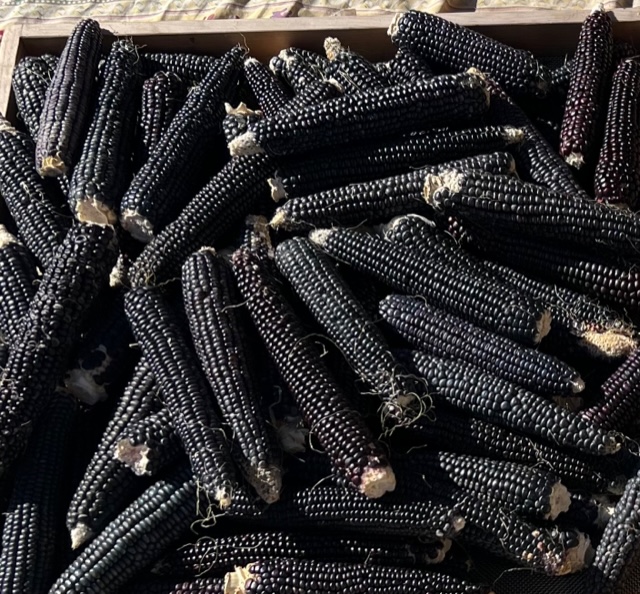
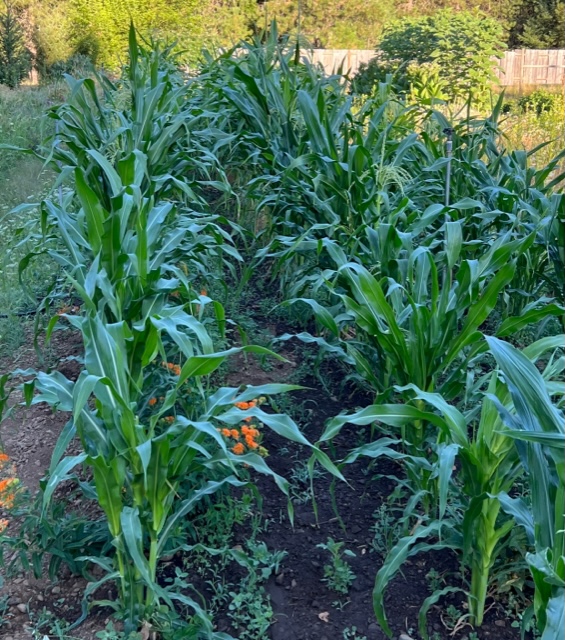
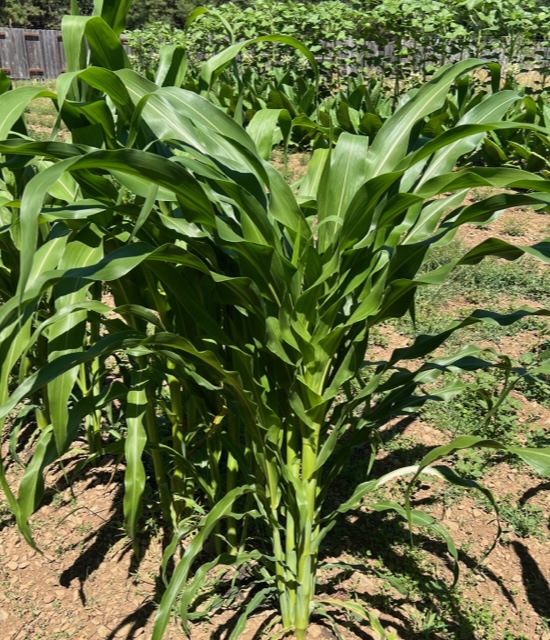
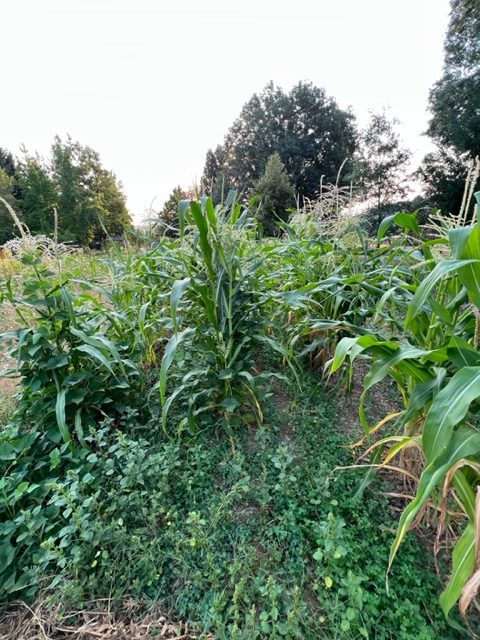
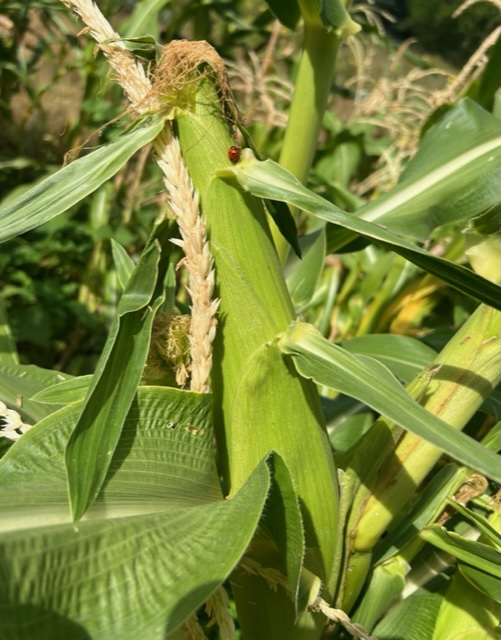
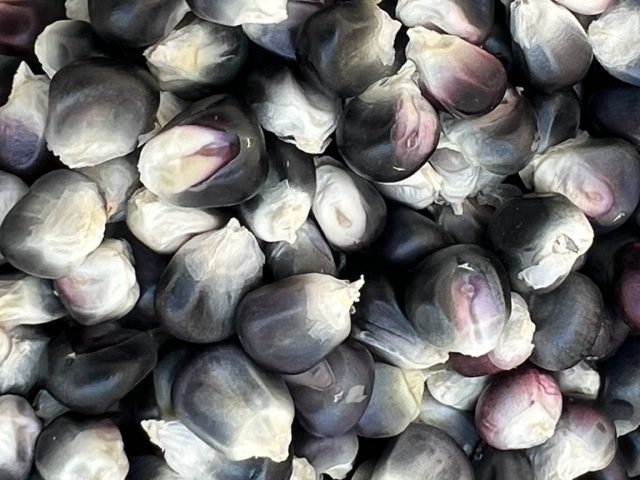
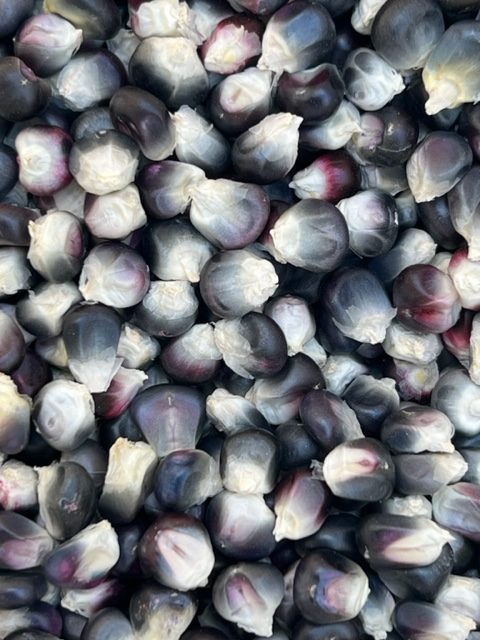
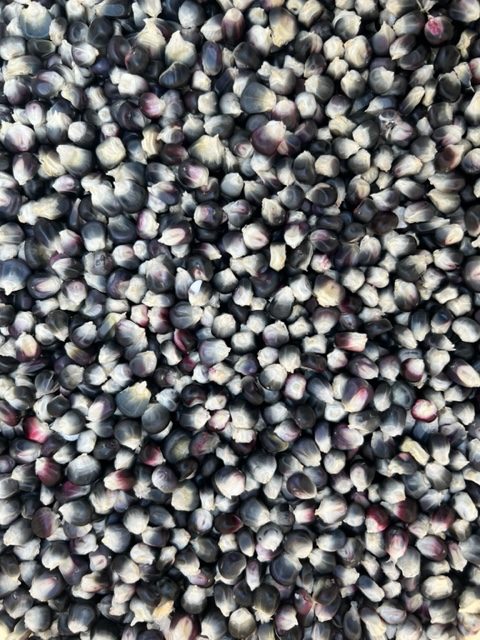
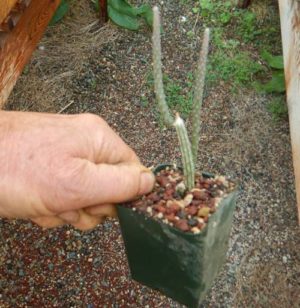

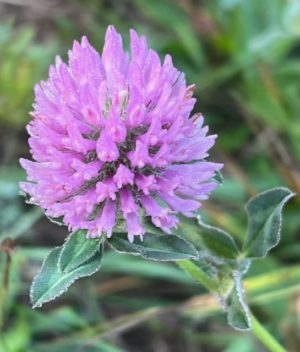
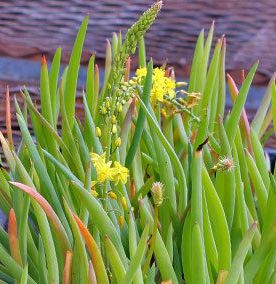
Laura Meyer (verified owner) –
I sowed these May 21 in 4b and draped a cover cloth over the ground because it was still pretty cold and I wasn’t sure if critters would munch up the kernels. As a first-time corn-grower and not a huge fan of corn, I was nervous about dedicating a good chunk of my community garden plot to these. My fellow gardeners warned me that no one had ever had success with corn at our garden, mainly because various animals snatched the ears before the humans could. Alas, the image of those beautiful dark kernels and Richo’s description of winter porridge encouraged me to try, even if I was just growing for the deer. When the Fourth of July came around, the stalks weren’t just thigh-high, they were more like head-high, and some were already towering over me (I’m 5’7″). I’d planted various beans among them, and it was very exciting and gratifying to watch them climb together. It rained so much last summer that I did very little but exclaim at their size and wonder what structures I could build with their stalks on my weekly “is it still there?” garden visits. When it came time to harvest, I greedily and gratefully gathered them all and ground them into what was truly the finest blue corn meal I’ve ever known. Maybe the deer are only interested in sweet corn, or maybe the ears were out of reach, or maybe the beans helped obscure the ears, or maybe it was beginner’s luck, but I’ll definitely devote space to growing these in the years to come. Thank you!
Upvote if this was helpful (1) Downvote if this was not helpful (0) Watch Unwatch Flag for removal